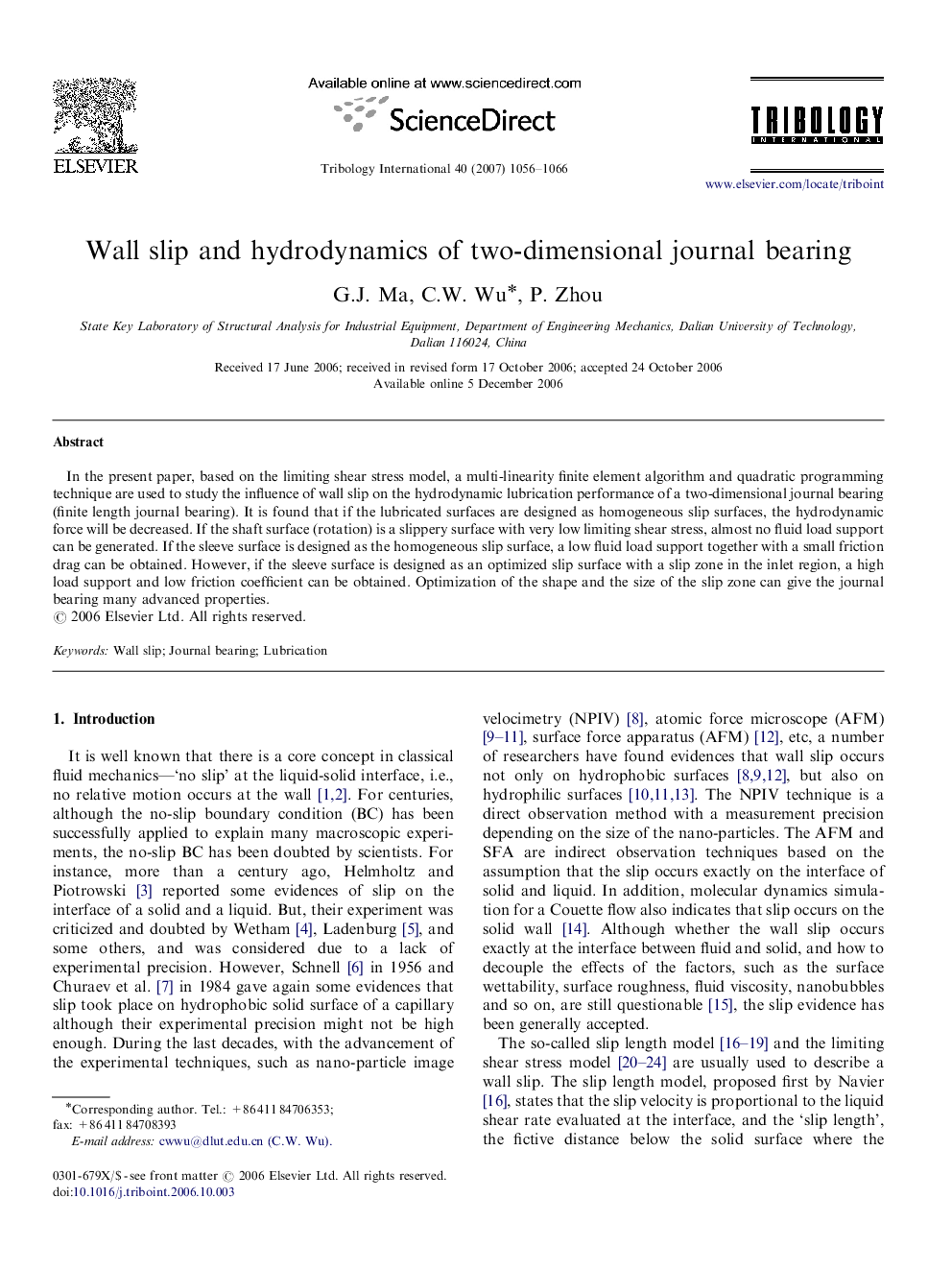| Article ID | Journal | Published Year | Pages | File Type |
|---|---|---|---|---|
| 616415 | Tribology International | 2007 | 11 Pages |
Abstract
In the present paper, based on the limiting shear stress model, a multi-linearity finite element algorithm and quadratic programming technique are used to study the influence of wall slip on the hydrodynamic lubrication performance of a two-dimensional journal bearing (finite length journal bearing). It is found that if the lubricated surfaces are designed as homogeneous slip surfaces, the hydrodynamic force will be decreased. If the shaft surface (rotation) is a slippery surface with very low limiting shear stress, almost no fluid load support can be generated. If the sleeve surface is designed as the homogeneous slip surface, a low fluid load support together with a small friction drag can be obtained. However, if the sleeve surface is designed as an optimized slip surface with a slip zone in the inlet region, a high load support and low friction coefficient can be obtained. Optimization of the shape and the size of the slip zone can give the journal bearing many advanced properties.
Keywords
Related Topics
Physical Sciences and Engineering
Chemical Engineering
Colloid and Surface Chemistry
Authors
G.J. Ma, C.W. Wu, P. Zhou,
